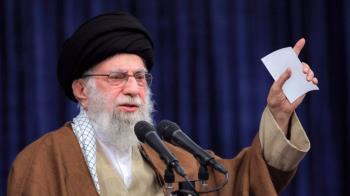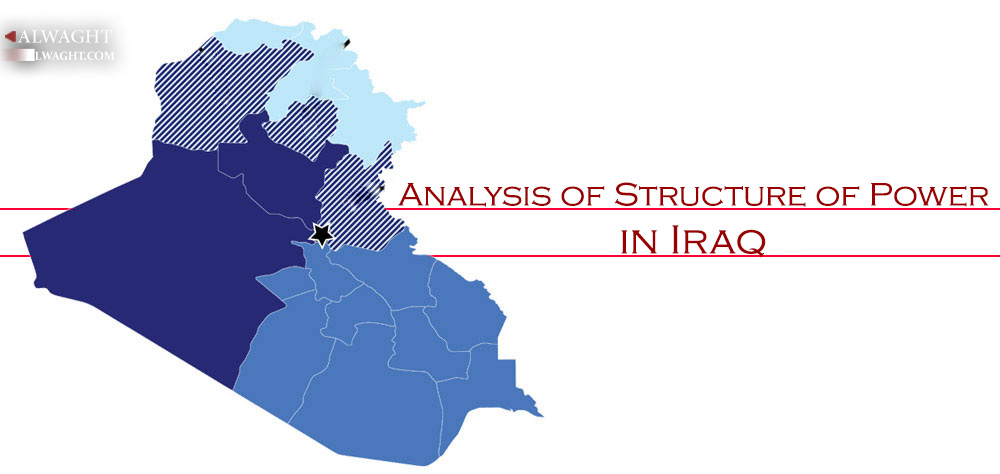Alwaght- The process of state-building and nation-building after the fall of Baathist regime in Iraq, has been one of the most influential issues in the region, and has had great impact on the situation and developments of Iraq’s neighboring countries. The structure of post-Saddam Iraqi government, from a single structural and centralized system of government, has turned into a multi structural and decentralized one. A centralized country is a country in which every part of it is under the command of a single government, which is responsible for all national and local decision-makings, and all matters are governed by the central government’s agents. A decentralized country consists of a few political centers (organized political powers). In other words, a decentralized country consists of a few different governments.
The Baathist regime of Iraq was a totalitarian and authoritarian regime which would use force to solve its problems. But the fall of this regime resulted in the participation of all social groups in the political process. It also had an impact on the power structure of Iraq; the power structure that defined the identity of Iraq in pan-Arabism, Sunnism, and a form of an eclectic socialism.
In fact, the authoritarian and repressive political system in Iraq in prior years prevented the disclosure of the desires and tendencies of social groups. Now the Shiite and Kurd leaders have the opportunity to represent their interests, identity, and desires. However, this also revealed many discrepancies and contradictions in the goals, ideals, and interests of these leaders. Therefore, it could be argued that Iraq's developments in recent years have resulted in greater coordination and greater coherence among some movements, but they also have increased the amount of conflicts, disputes, and violence among Iraqi groups.
On this basis, the Iraqi political and religious elites are forced to resolve the internal problems, and they do not play a role in extending Iraq’s authority outside the territorial boundaries. The creation of Iraq's new political structure was based on the participation of ethnic and religious movements, and social groups in a different format than the past. But it could be argued that in the beginning, in line with US’ plans and policies towards West Asia, and in order to establish a model government in Iraq based on the rules and principles of liberalism and human rights, and democratic methods, US was aiming to set the groundworks for fundamental changes in the West Asian Region.
Currently, the ethno-religious conflicts in Iraq have two major forms: one is the Kurd-Arab ethnic conflict which consists of disputes between the central government and the Kurdish Region. Other is the artificial religious conflicts of Shiites and Sunnis, due to the presence of US forces. These conflicts consist of major differences in opinions of Shiite and Sunni groups. Differences such as the method of sharing power in the new political system, the military and security forces, and the presence of each of them in the political, military and security structures. In addition, terrorist operations of Sunni extremist groups such as al-Qaeda and ISIS against Shiites in Iraq can also be classified as the religious conflict between Shiites and Sunnis.
It is clear that disintegration of the army and the Baath regime's military and security agencies on one hand and Salafi/Sunni dissidents’ insurgency on the other hand has led to the formation of waves of insecurity in Iraq. So much so, that internal security has turned into the main concern of the general public, and the priority issue for the political elites. In addition, because of the formation of a stratified government structure in Iraq by the US, the concern for security has led to the tendency of creating new sectarian and ethnic security-military structures to provide security.
The government's inability in providing security in the recent years, and growth in sectarian hostilities has caused the Iraqi general public to direct their attention towards the abovementioned structures for security. In addition, occupation of Iraq by US military forces is continuing with the excuse of complex and sophisticated violence in Iraq, even after the official withdrawal of US forces after the military-security agreement. This occupation is considered to be one of the main factors for the continuation of violence in Iraq, which forces the government to completely pay attention to internal matters and not take an affecting role beyond the boundaries of Iraq. It also challenges the government in its alignment with the Axis of Resistance.
The following issues have led to the failure of government in the state/nation building process, and the increasing use of violence by different groups in Iraq, which itself challenges the government in extra-territorial fields:
Conflicts and disputes in the objectives and interests of social groups and the lack of reconciliation and convergence between these groups, lack of civil tradition of democracy and legality, implementation of quota systems in distribution of power(not just party related, by also gender related, in the way that a quarter of the parliament members must be female), excessive demands of the Sunni minority by relying on Sunni Arab states and the mentality that has been present in Iraq for several decades, history of resolving disputes by means of force and violence from the government and different groups, and the intervention of external factors and players in internal conflicts of Iraq.
Thus, the contradictory mentality of communal and sectarian violence has led to the failure of attempts made in order to manage the political process and security files of Iraq. This mentality is also an obstacle for the country in playing a role in the Axis of Resistance.
Therefore it can be declared that despite the passage of more than a decade since the formation of a new political system in Iraq, the country has not experienced peace and stability. Hence, the future outlook of Iraq suggests that the continuation of this situation will lead Iraq towards new internal and regional problems and challenges, which will definitely have numerous internal and external consequences for Iraq and other regional players.
Accordingly, the most efficient solution for the crisis in Iraq, which still persists in different levels with all the ups and downs, is the development of reconciliation within the national dialogue and the prevention of interventions of Arab and non-Arab countries, especially Saudi Arabia, Qatar, and Turkey as well as of trans-regional powers such as the US and its Western allies.
Indeed, without unity, national reconciliation, and religious and social cohesion, it seems quite unlikely for this country to overcome the challenges and achieve any success.



























